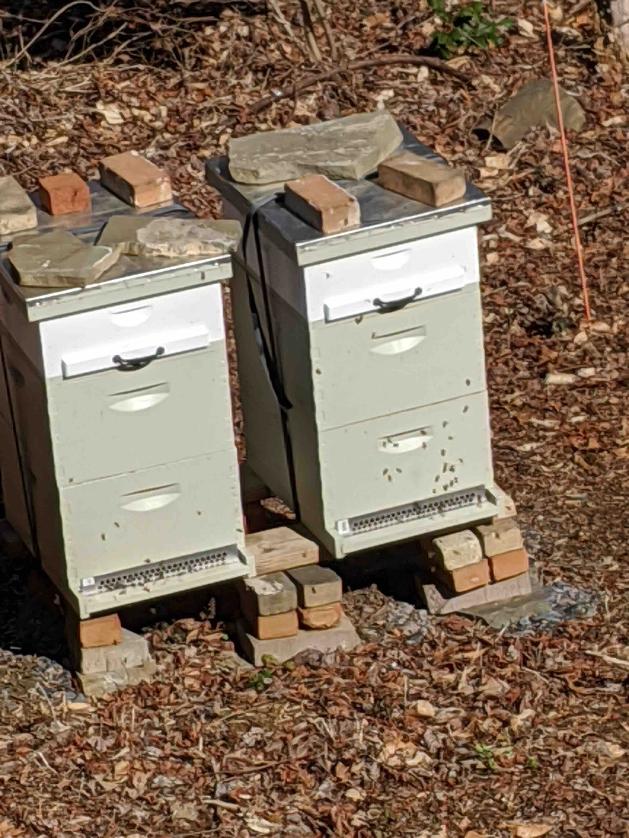
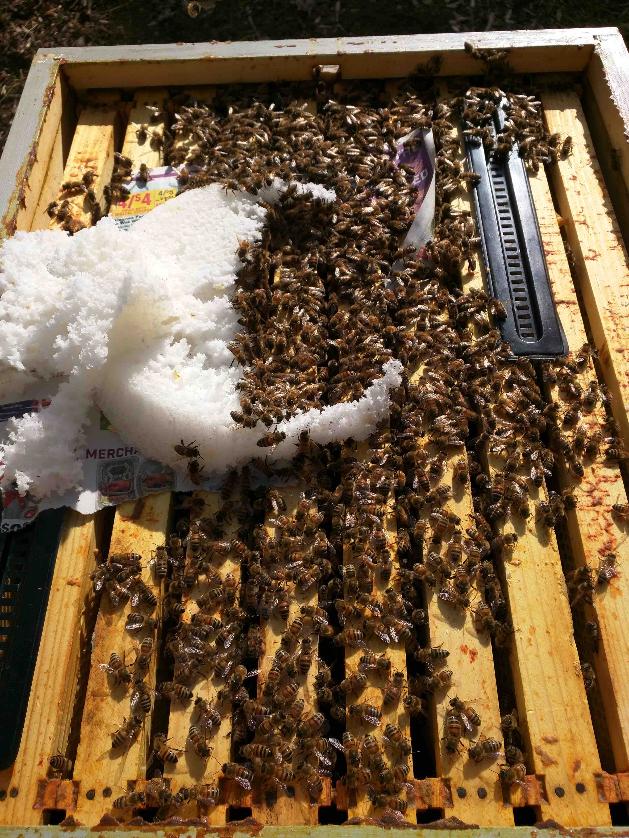
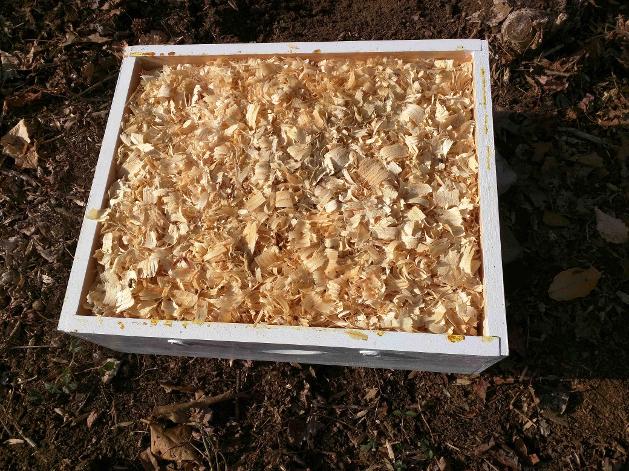
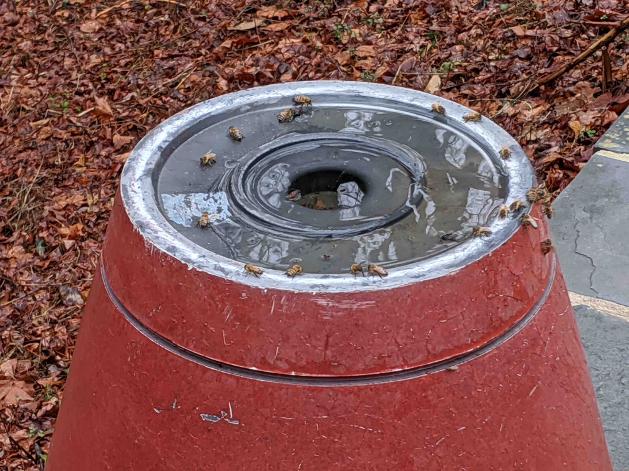
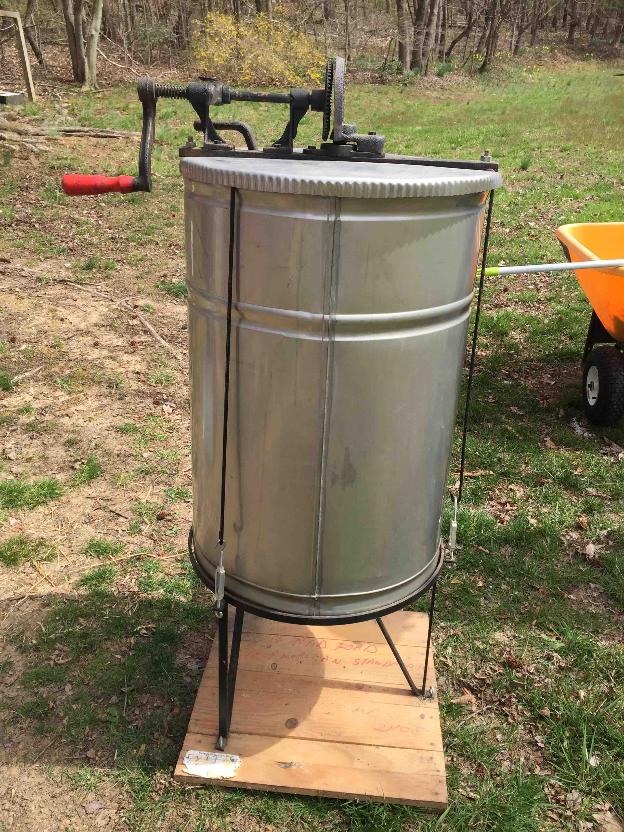
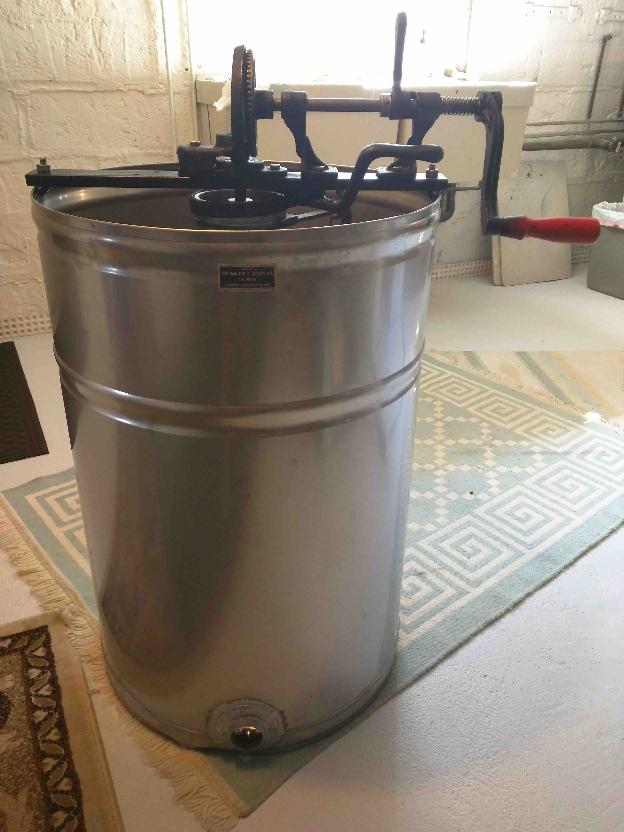

On warm winter days, the bees do fly.

As the bees eat through the sugar fondant that I made for them, the sugar structure starts to resemble a bunch of snowflakes.

There are those in favor and those against the use of quilt boxes. What surprised me was the amount of moisture that I found in the shavings at times when I'd open the lid (in the middle of a cold winter). The bees did great through the winter and I plan to use the quilt boxes again next winter. If the shavings weren't there to collect the moisture produced by the bees, I worry that condensation could fall back down on the bees and chill them.

This is the bottom of a flower pot that ended up being a fabulous watering hole during the winter time. The pot was always in the sunshine and it was an easy method for offering clean drinking water to the bees without drowning any of them. During the spring, as the bee population grew, I had to move the pot because it was bringing too much bee activity into the yard.

I purchased a used hand crank, 2-frame, tangential (Kelley) extractor from a local beekeeper who had stopped keeping bees some years back. Does anyone know when this was built? I've tried contacting Kelley Beekeeping in Kentucky but so far, no answer as to the approximate age of this equipment. When I first looked at the extractor, I tried turning the hand crank and could barely turn it using two hands. In general, this is a bad sign (you want the extractor to 'turn like butter'). But I could see solid craftsmanship, so I purchased it anyways knowing I'd have to figure out what was causing friction.

I spent time during the winter cleaning and fixing the extractor. I replaced rusted set screws and purchased a new honey gate from Dadant. There is one component of the basket assembly that I think I am missing. I look forward to putting this extractor to use!
©Copyright ZeesBees.com 2019-2024
Make a free website with Yola